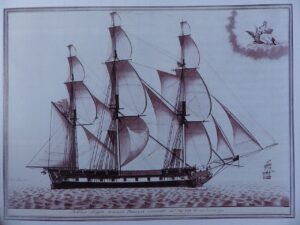QUEENS OF THE SEAS_PART 2
GENOA

Genoa the Superb—the nickname the town received—was one of the most long-lived and powerful Maritime Republics of medieval times and, along with its historical rival Venice, is one of the best-remembered. The modern waterfront, embellished with the extraordinary work of Renzo Piano, brought new life to the historic area of the harbor.

The old port, active since 500 BC, was the live core of this power, which grew once the city obtained its independence after the First Crusade in 1096. In alliance with Pisa, the city fought against the Arabs and the Saracen pirates that were infesting the sea. From the 13th century, its political and commercial powers expanded even more and it came to control a vast part of the trade of the Byzantine Empire, across the Mediterranean, including Egypt.
It is not a coincidence that the first world bank was established here.

The numerous museums that the city hosts today, including the Museum of World Cultures and the largest Aquarium in Italy (also among the largest in Europe), are just some of the signs of the influence that the city formerly possessed. A long stroll through the beautiful maze of its city center—surprisingly, the largest in Europe—is a great opportunity to immerse oneself in Genoa’s glorious past.

VENICE

Due to its strategic position as the gate between distant worlds, Venice—la Serenissima—became the intermediary for trade between the East and West and a lively cultural and artistic center, of which there is still evidence today.
She (“la Serenissima”) was born during the barbaric invasions when people took refuge on the islands of the lagoon, previously inhabited only by itinerant fishermen and salt workers. Venice grew its presence in the medieval world, remaining independent for more than a thousand years.

It initially established its authority in the Adriatic Sea, which is considered Venice’s gulf, and it reached the climax of its splendor after the Fourth Crusade in 1204, exercising commercial control over the eastern Mediterranean. The abundant wealth of the city also transformed local political power and, over the 12th and 13th centuries, the traditional dukedom became a solid republic where their strong and growing economic interests could be better expressed and pursued.

We hope that this brief story was able to show you how the celebrated beauty of some of Italy’s most-visited cities has deep roots in history, the character of the land, and its people.
Next time you walk through the streets of one of the former Maritime Republics, we would like to invite you to try to look for some of the signs of their glorious past.

You might notice that you can still breathe in the pride and the strength that made them the magnificent towns they became.
Words by Elisa Spampinato


